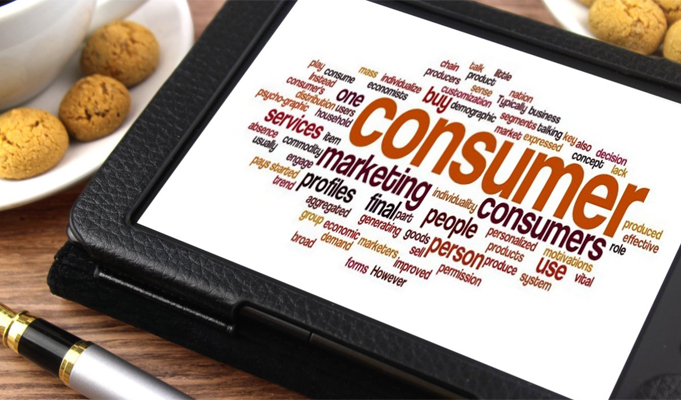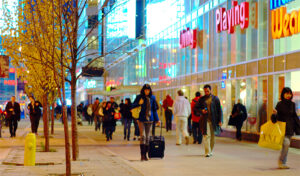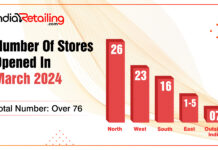Market research company Euromonitor International has revealed the top 10 consumer trends for 2017 in a report titled ‘Top 10 Global Consumer Trends for 2017’.
According to the report: Consumers are now more demanding of products, services and brands than ever before and are using digital tools to articulate and fulfill their needs. 2017 consumers are more likely to have a hand in defining themselves and their needs. They want to shop faster and secure the swiftest convenience, and look to tech tools as aids in this quest. They want authenticity in what they buy. Consumer requirements even extend to a post-purchase experience; to their relationship with brands once the transaction has happened.
10Ageing
According to Euromonitor International, in 2017, almost a quarter of everyone on the planet will be over the age of 50, a record number. These consumers are transforming what it means to be older in terms of lifestyle and are more demanding in their consumption needs, creating what is increasingly referred to as the “Longevity economy”.
9Consumers in Training
Today’s family demands are launching youngsters into consumption at an earlier stage. Typical factors include parents struggling with work / life balance and a consequent greater consumer reach for paid-for convenience, extended online time for all and youngsters staying in the home, often into their 20s and beyond.
Euromonitor International says this reality empowers children with greater agency — not just as family consumption influencers, but consumers in training. Increasingly, the input of children in purchasing decisions is welcomed by their parents, rather than being perceived as a nuisance.
8Extraordinary
We have reached a point when mass-produced items have lost some of their shine. The internet is enabling consumers to purchase and discuss the “long tail” — unique, customised and exotic products and services; these “extraordinary consumers” are grabbing some of the limelight and spelling out their needs.
Extraordinary consumers fall into “atypical” consumer categories in terms of height, security, weight, physical ability, dominant hand, music taste and sound experience or food tolerance.
These subsets are now finding a voice and calling for more buying choices and solutions-based design. Extraordinary consumers are now more outspoken when their needs are underserved, in areas like travel, hotel accommodation, furniture design and medical care as well as fashion. It transpires that these needs are also less niche and more mainstream, for example, fashion sizings for real people.
7Faster Shopping
In 2017, consumers are impatient, impulsive and in pursuit of immediate gratification. They want services yesterday and real-time virtual dialogue with their brands. And brands are responding with a slew of speed-up business models, from one-hour delivery to offers via beacon technology, used by retailers to broadcast messages to nearby consumers via their smartphones.
Next-day delivery is being overtaken by ever-faster delivery possibilities for the shopper in a rush. Internet shopping giant Amazon is working on delivering packages to people’s homes in under 30 minutes through the use of drones.
“Proximity-aware tech” is in as far as retail is concerned. Sending alerts from beacons in stores directly to the mobile phones of passers-by is a communications tool that is growing in popularity and getting more sophisticated. Alerts, often flagging offers, are increasingly tailored to past purchases or items customers have viewed on the brand’s website.
6Authenticity Is Important
According to the report, authenticity is a standout consumer value this year, heralded by everyone from change-makers and celebrities to supermarkets and chefs.
In the conscious debate about what actually counts as authentic, companies make efforts to ensure authenticity is part of this reach for the real.
“Consumers are now more demanding of products, services and brands than ever before and are using digital tools to articulate and fulfil their needs. They want authenticity in what they buy and expect elements of personalisation in mass produced as well as upscale items,” states author, Euromonitor International’s Consumer Trends Editor, Daphne Kasriel-Alexander.
Food trends, particularly green-tinged ones, are a useful indicator of the focus on authenticity, with many revolving around what constitutes “natural”. They are part of consumer eagerness to make more considered purchasing decisions, buying from “responsible” brands that sell them quality products with real value, the report states.
5Consumer Identity
Many consumers aspire to be global. In the so-called global village, universal brands are still perceived as an opportunity to be a world citizen by their consumers. Apart from global identity, gender identity politics have also taken centerstage with brands having to accept audiences of all genders, races, ethnicity and cultures.
Brands are being forced to rethink just who their audiences really are, within countries and in different countries, and how they interact with each other.
4Personalisation
According to the report: “While there is a lot more personalisation of “mass-produced” items, high-end personalisation is also thriving due to demand for “experiential luxury”, the shift from “having to being”. With an almost infinite capacity to gather information on clients and innovation in production technologies such as 3D printing, the masses can now imitate their high-end counterparts.”
This trend is changing consumer expectations, as customers demand that brands fulfil or even predict their needs. Brands are also looking to strengthen the brand / client relationship through the emotions they can arouse by making things “personal”.
Products that fit consumers and brands that understand individual tastes and preferences are doing so much better in the market.
Brands and services that are positioning themselves as curators for individual tastes are moving ahead of others.
3Post Purchase Experience
In 2017, shoppers will be paying more attention to their post-purchase experience, increasingly an important part of the value offer of a product or service. Post-purchase contact with the company’s representatives, the medium and the tone of the response are also critical parts of the customer journey, shaping their view of the business.
With consumer customer service expectations raised, brand willingness to address post-purchase queries and complaints will influence whether a consumer recommends or criticises it to fellow consumers and considers a repeat purchase. To satisfy and retain customers, more products and services come with a type of built-in offer of post-purchase assistance. This is linked to an emerging definition of convenience going beyond fulfilling customer needs to actually predicting them — including the post transaction period. The extended life of products, with the greater consumer openness to buying “pre-loved” items, is also part of the post-purchase picture. Durability is a more common consumer goal.
2Privacy & Security
Retail organizations are attractive targets for data theft due to the massive amounts of credit card information they process. Hackers are constantly looking to exploit unsecure remote access methods and gain access to sensitive data and systems.
A study conducted by KPMG last fall found that a growing number of consumers are leery of breaches and the loss of data privacy. An IBM study revealed that attacks against retailers are growing more sophisticated and targeted.
It is up to retailers to do everything they can to protect their customers’ data privacy. They need to ensure their PCI (Payment Card Industry) Compliance is up to date. Retailers also need to ensure that their websites are structurally secure and adopt robust monitoring procedures to quickly and effectively detect and eliminate hacking attempts at regular intervals.
1Wellness as a Status Symbol
Healthy living is becoming a status symbol, as more consumers opt to flaunt their passion for wellness through paying for athleisure. Athleisure is popular because it’s not just a trend, it’s here to stay. According to Business Insider, athleisure is a lifestyle that asks people to make better decisions; it pushes to consumers to make conscious decisions about how they spend your time and money.


















